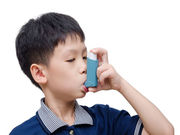Controlling allergens, household pollutants can reduce need for medication
MONDAY, Oct. 31, 2016 (HealthDay News) — Reducing indoor allergens and pollutants can help control children’s asthma, reducing their need for medication, according to a report from the American Academy of Pediatrics published online Oct. 31 in Pediatrics.
For any child using daily asthma medication or experiencing symptoms several times a week, parents should talk with their pediatrician about possible environmental triggers, report coauthor Elizabeth Matsui, M.D., of the Johns Hopkins Bloomberg School of Public Health in Baltimore, told HealthDay. “This approach should be an integral part of asthma management. If environmental exposures are targeted, the effects on the child’s asthma can be similar to that seen with medication,” she said.
Other highlights of the report include the following: About half of children with asthma are sensitive to mold; two-thirds of children with persistent asthma are allergic to cats and dogs; cockroach and mouse droppings are also common allergy-asthma triggers (concentrations of mouse allergens in poor urban homes can be 1,000 times higher than those found in suburban homes); stoves and other gas appliances can also play a role in some asthma flare-ups; and chemicals in air fresheners and cleaning agents often irritate airways and lead to asthma attacks.
“Individually tailored environmental control measures have been shown to reduce asthma symptoms and exacerbations, are similar in efficacy to controller medications, and appear to be cost-effective when the aim is to reduce days of symptoms and their associated costs,” the authors write. “The efficacy of environmental control measures has been sustained for up to one year after the intervention.”
Full Text
Copyright © 2016 HealthDay. All rights reserved.








